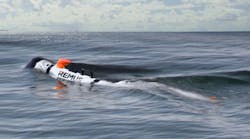By Keith Gurnett and Tom Adams
For suppliers and assemblers, the transition from conventional lead solders to the new lead-free solders is a complex exercise, primarily because the transition involves numerous details in every step of manufacturing.
The transition is challenging because missing one small item can result in real trouble. Recent field failures, for example, demonstrate that components are experiencing tin-whisker growth and shorting out.
Pressure is mounting to comply with lead-free rules, in large part because of the Reduction of Hazardous Substances (RoHS) rules that will apply to electronic products sold in Europe as of next July. Although RoHS addresses primarily consumer products and exempts some products from the regulations, the influence of RoHS is pervasive; any manufacturer or assembler whose products are being marketed in Europe knows that there is no choice but to comply.
RoHS itself covers six hazardous substances, but overall compliance will become even more challenging with legislation under consideration in the European Union. One of these proposals is the Life Cycle Assessment (LCA), which addresses the environmental problems of material content and the rules for disposing of a product at the end of its useful life.
Two international standards programs, ISO 9000 and the newer ISO 14000, have the potential to remove some of the uncertainty from the transition process. Both are quality management programs, and both rely heavily on careful documentation of processes. They also provide a well-defined structure of the quality management tree with final responsibility at the top-with the chief executive officer (CEO).
Neither of the ISO programs was designed to deal with the switchover to lead-free solders, and there is no magic in their use. Both programs originated in Europe (ISO 9000 in the 1980s and ISO 14000 in the 1990s), but in consultation with U.S. engineers. Both sets of standard are employed globally, and are part of electronics manufacturing in Asia.
Military benefits
In the long run, the global legislative demand being made by lead-free and RoHS in the consumer world will benefit military and aerospace users in two ways. First, the COTS supply lines will become far more defined and quality controlled. Second, if ISO does become dominant in controlling these problems, then the overall availability of suitable COTS sources will increase. As manufacturing capability continues to migrate to Asia, sourcing of COTS in the absence of ISO standards may well become impossible for the military.
Many engineers take a critical view, saying they believe the ISO standards do little more than generate documents. In some applications, this is probably an accurate observation. But even the most cynical engineers generally recognize that the ISO standards can result in consistency in processes and in product.
The ISO standards, in other words, will not save time, and they will not tell how to keep delaminations from happening in QFPs during lead-free reflow. Once the engineer defines the processes that will keep the delaminations out, however, the ISO standards will help achieve consistency from that moment on.
ISO also creates a standardized documentation system. Top-end manufacturers and suppliers generally already have a capability that is well documented and controlled; ISO just demands that it be in a standard format and that it be audited. The documentation also has to be supported by a quality-controlled management system that reports to the CEO, and that cannot be compromised by production schedules or by sales and marketing.
Basically, a supplying company writes a series of standardized documents that define its process steps. The supplier must prove that his processes work to a specification. The supplying company then uses these documents in its manufacturing, thus making the manufacturing process transparent and-more important-auditable.
Types of ISO audits
There are three types of audit. The supplying company can be self-auditing, can be audited by a major customer, or can be audited by an accredited third-party firm.
The task of the auditor is to make sure that the supplying company adheres as closely as possible to the written documents. There is no guarantee that quality products will result from the ISO programs, but there is an excellent probability that the products will be consistently of the same quality over time. All materials used will also be specified and traceable, and the lifetime performance of parts and assemblies will be specified and documented.
Thus if an assembler selects a supplier of lead-free components that has ISO 9000 certification, the assembler can assume higher-than-average consistency in lots of components from this supplier.
It is possible, of course, that the consistency might turn out to be of the negative variety-every lot of components might have a high percentage of internal delaminations, for example-but even in this situation once the problem has been solved and the necessary process changes made, the problem will tend to stay solved. If a problem pops up, the documentation exists to track down the root cause more quickly than would be the case if documentation were less well controlled.
The risks that the lead-free transition poses for military and aerospace applications are outlined by Marjory Craw-Ivance, director of engineering services, lab services and green services at Celestica. “If I were to take a look at military and aerospace in particular . . . many companies haven’t really looked at the implications of lead-free to their overall business.
“There are many folks who were thinking that the organizations would be exempt, but now they’re beginning to understand that many of the components that they use today will be transitioning over to lead-free. They may end up having a situation were they have mixed-metal technology, or where component availability becomes an issue.”
These organizations, she explains, may reach the point where they are ready to make the transition to lead-free, but they may have trouble evaluating the probable impact of lead-free assembly on their product reliability.
“So what we are seeing now in the larger industry, beyond the typical network infrastructure consumer-type product, is that, even within military and aerospace [there is] some concern about reliability of supply and reliability of assembly,” she adds. “And so for many customers we are looking at trying to help them transition through this particular activity by providing services that will help them get to where they need to be, to be confident that there will be no impact to the supply of the assemblies that they have, or the reliability. “
How can ISO standards help with the transition? Jerry Czerwonka, director of quality assurance for Avnet Electronics Marketing Americas, gives his view. “When I think of ISO-9000, to me that is your international standard for a quality management system. Now the quality management system is basically a framework for the things you need to do to have an effective management system.
“Say you had a part that one day was not RoHS compliant and the next day was, you would want a supplier that is ISO-registered, because the ISO standard does things like document control, record retention, these types of things. So when you’re talking an ISO-registered supplier, you at least know that they should have records that show you when these things have changed, and when the specifications have changed.”
The ISO standards, however, do not have any specific requirements regarding the transition to lead-free solders; the standards set up a framework for procedures that will generate quality and reliability in any manufacturing situation. They do require that all material used be nominated and specified, along with all the necessary controls.
This may change, however. Craw-Ivanco observes, “Currently I do not think that there is a category within ISO 9000 or 14000 that specifically addresses lead-free. There are some companies that administer the ISO certification that I believe are taking a look at how one may introduce RoHS as an individual category within the certification process. I don’t believe that that’s in place today.”
She points out three central areas of technical concern in the transition to lead-free solders: the higher lead-free reflow temperatures, typically 260 degrees Celsius; the greater risks from retained moisture within components; and the compatibility of the lead termination finish on the components. There are numerous other issues-for example, potential damage to the printed wiring board itself.
If one is selecting a supplier of lead-free components, how significant is the type of auditing that the supplier claims? Are suppliers that have been certified by third-party auditors more to be trusted than suppliers who have been audited by themselves or by their customers?
“In terms of the third-party auditing,” Craw-Ivanco notes, “there is a very particular series of meeting and audit proof tests that one has to go through. Under those circumstances, there’s a degree of vigilance that has to be followed that perhaps would not be seen in self-auditing.”
Where does that leave auditing by the customer? “Customer audits that Celestica has participated in also have a high degree of vigilance in terms of expectations and demonstrating that you have complied with the proof tests that you have in place.”
Czerwonka of Avnet takes a similar view, and points to the historically transitory nature of some quality management systems. Many companies have adopted one quality-management system, only to replace it a decade or so later because it came up short in some areas.
ISO standards, he says, have more staying power. “ISO came along, and people started to talk about the third-party registration. And what that does is kind of give you a third-party look-over-the-shoulder a little bit, and perhaps adds a little more integrity to it,” says Czerwonka. “Quality systems over the years have evolved, but I think the third-party involvement is what made the ISO system stronger than the earlier quality systems.”
Documentation gives transparency
What makes it stronger? The extensive documentation of the ISO standards tends to obscure the simple idea behind the standards. Czerwonka explains: “ISO basically says, ‘Document what you do.’ Then you must do what you document, and then prove it.”
To achieve ISO all a supplier needs to do is format his existing quality control and documentation to the ISO standard, and prove the specification of his devices. This may well be a major task, but if it is performed thoroughly it should provide the valuable benefit of encompassing all of the potential danger spots in the move to lead-free solders.
As an example, Czerwonka says, “I would hope that if it were my company that supplied the part, and [a customer] said he had a capacitor cracking, the first thing I would say to him would be, ‘What temperature did you flow it at?’
“If he turns around and gives me a figure that is compatible with the new lead-free, and then I look at the PO and see that what he purchased was a leaded product, I want to be able to tell him that. That’s the type of control and documentation you have to have in this environment.”


